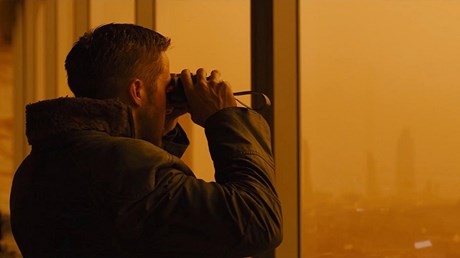Denis Villeneuve’s ambitious sequel is a life-affirming spectacle of noir and neon.

One of the powers of cinema, and particularly the sci-fi genre, is its ability to hold up a mirror to our present era and ask us to consider its current trajectory. Denis Villeneuve’s Blade Runner 2049, the sequel to Ridley Scott’s 1982 masterful sci-fi neo-noir, presents a grim and graying vision of the near future. That future, however, is punctured with vivid images of hope. Amid the complex philosophical and theological questions it raises about the nature of humanity, existence, and the soul, a flicker of sincere goodness shines.
“Memories … you’re talking about memories,” declares Deckard in the original film. For many, 2049 will recall memories of the original Blade Runner, with its mood and textures—the haunting atmosphere of its 2019 Los Angeles. Now, 30 years after society has recovered from a technological blackout, the manufacturers of replicants—artificial humanoids—implant memories into their lifelike creations in order to make them behave more humanely.
In 2049, LAPD “blade runner” K (Ryan Gosling) is a replicant who seeks the truth behind a childhood memory he continues to recall: a wooden horse, hidden in the belly of an enormous factory. Could it have actually happened? That this memory is so vivid—so real—must provide the key to his very identity. Was this memory artificially created in a lab and implanted, or did the experience really occur? And if the memory did happen—did it happen to him? What is really real?
‘Four symbols make a man.’
The film gestures toward our growing understanding of the unique connection between memory and bodies. In his Trauma and Memory: Brain and Body in a Search for the Living Past, …
Source: Christianity Today Most Read